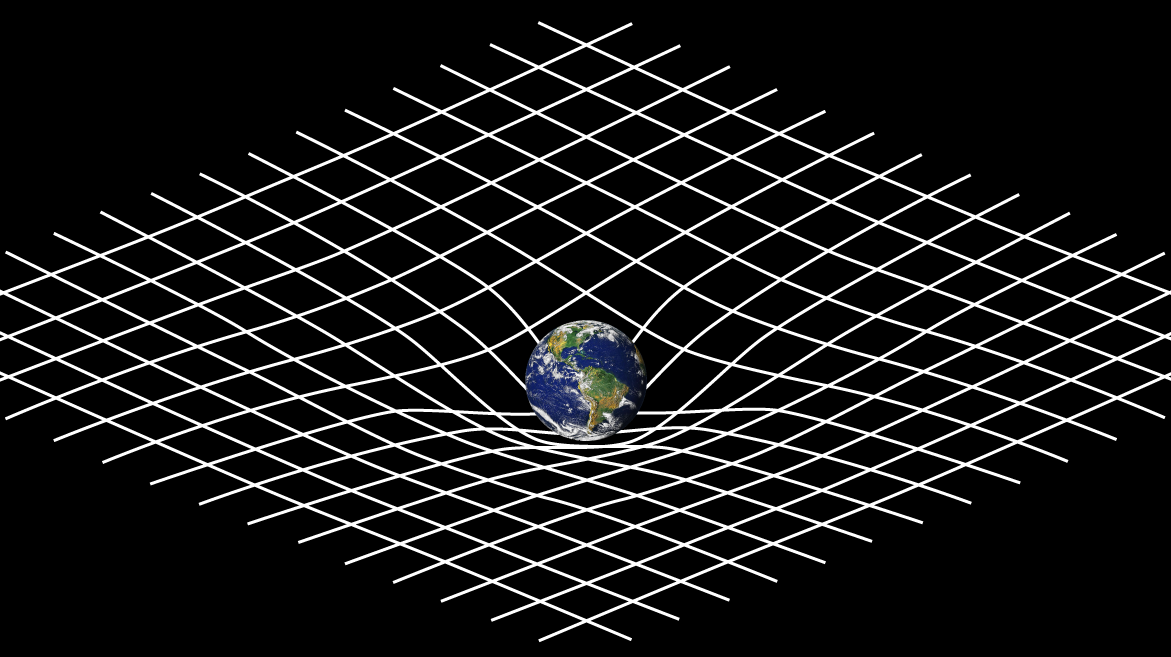
“Matter tells spacetime how to curve, and curved spacetime tells matter how to move.” -J.A. Wheeler
Issac Newton’s laws described the motion of objects and gravitation. Published in 1687, Newton’s formulas are still used to describe and calculate rocket trajectories, the motion of satellites and the International Space Station. Although Newton described the mathematics and the why of gravity and allowed predictions of motion, he could not describe how gravity worked.
Then came Einstein.
In 1905 Albert Einstein published his Special Theory of Relativity, putting forth that the laws of physics are the same for all non-accelerating observers. Through his thought experiments he also reasoned that by moving through space, we change how we move through time.
In our daily lives we travel through space here on Earth and some lucky ones through the space beyond our Earth. We also travel through time, marking the hours days and years. Einstein envisioned these two dimensions interwoven in “spacetime.”
In Einstein’s spacetime we travel through time and space together. If we were to stand still, we would be traveling through time. When we move, we are traveling a bit through space, with most of our travel through time. If we could travel at incredible speed, the speed of light, then all our travel would be through space and none through time. Time would essentially stand still.
Einstein then began working on how to incorporate gravity into his theory, and in 1915, published his General Theory of Relativity, building on Special Relativity and further refining Newton’s work on gravitation. For Newton, gravity was an instantaneous force, able to work over great distances.
Working out his equations for general relativity, Einstein predicted that massive objects could cause a distortion in the geometry of spacetime. He then proposed his alternate concept of gravity, that it was not a force, but a result of the distortion of spacetime. This stretching, caused by mass and energy warps spacetime and changes the movement of objects, causing them to curve with the distortion. This movement following the distortion or curve is what we perceive as gravity.
Einstein also predicted the occurrence of gravitational waves, a compression of space in one direction and stretching in another sending ripples through spacetime.
On Sept. 14, 2015, one hundred years after the publication of his theory, Einstein’s predictions of the distortion of spacetime were proven with the Laser Interferometer Gravitational-Wave Observatory (LIGO). This ripple was caused by the collision of two massive black holes. These observations will help physicists learn more about our universe, and more about gravity.







